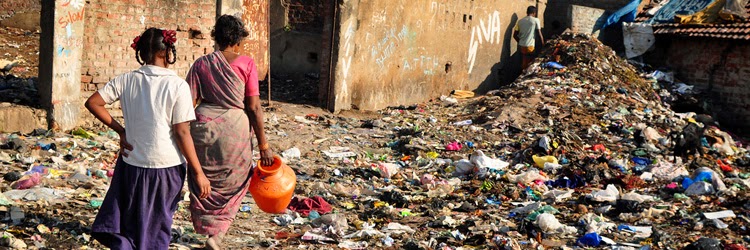A
gruesome word disguising a more gruesome activity, child trafficking is best
described as an inhuman blight upon the civilized world. To put it in layman
terms, children are used as a form of currency for various illegal activities.
An apt description would define it as the "recruitment, transportation,
transfer, harboring, and/or receipt" of a child for the purpose of
exploitation. It is a rampant activity in many parts of the worlds. And an estimate
by the International Labour organisation puts the number at 1.2 million
annually. Even though it has been internationally recognised as a major human
rights violation, only recently are the efforts to tackle it are becoming
prevalent and decisive.
 Well, a
prominent question that arises is, why? Why is a child drawn into a savage and
barbaric world, and his innocence skewered by trauma and suffering? In all
cases, the intended use of the child is not always known. But the major
objectives of child trafficking would be Forced child labour, child begging.
Child labour refers to the employment of children under 14 years. Overall,
child labour can take many forms, including domestic servitude, work in
agriculture, service, and manufacturing industries.
Well, a
prominent question that arises is, why? Why is a child drawn into a savage and
barbaric world, and his innocence skewered by trauma and suffering? In all
cases, the intended use of the child is not always known. But the major
objectives of child trafficking would be Forced child labour, child begging.
Child labour refers to the employment of children under 14 years. Overall,
child labour can take many forms, including domestic servitude, work in
agriculture, service, and manufacturing industries.Forced child begging is a type of begging in which boys and girls under the age of eighteen are forced to beg through psychological and physical coercion. The severity of this form of trafficking is starting to gain global recognition, with the European Union, the International Labour Organization (ILO), and the United Nations, among others, beginning to emphasize its pertinence. In many instances children who are forced to beg by third parties are often removed from their families, surrender the majority of their income to their exploiter, endure unsafe work and living conditions, and are at times maimed to increase profits. To ensure that these children are fully lured into this vicious system, children are maimed so that other means of livelihood are closed to them. Furthermore, many of the gangs which run networks of forced begging have heavy drug involvement, thus the children under their control are often turned into drug addicts in order for them to become further reliant on their exploiters.
The
children face abuse on a daily basis, which dents their psychological well
being and also deteriorating mental and physical health. These children receive
little or no education and have little hope for the future. Children who work
on the streets typically have little or no knowledge of their rights, leaving
them especially susceptible to exploitation both as juveniles and later as
adults.
 There
have been many approaches defined to tackle the issue of child trafficking, but
a victim-centered human rights approach to combating trafficking has been
internationally renowned as the best possible strategy when addressing this
issue, with recourse focusing on punishing the exploiter and rehabilitating the
child. In many instances the victims are often punished for unlawful acts
performed as a direct result of being trafficked. Also, the victims must be
given protection and the exploiters must be prosecuted to truly have any
impact. The victims, even though rescued from such a racket, must be provided
with a means of sustenance. Even though a person may be rehabilitated, the
effect on the mind will be felt throughout his/her life.
There
have been many approaches defined to tackle the issue of child trafficking, but
a victim-centered human rights approach to combating trafficking has been
internationally renowned as the best possible strategy when addressing this
issue, with recourse focusing on punishing the exploiter and rehabilitating the
child. In many instances the victims are often punished for unlawful acts
performed as a direct result of being trafficked. Also, the victims must be
given protection and the exploiters must be prosecuted to truly have any
impact. The victims, even though rescued from such a racket, must be provided
with a means of sustenance. Even though a person may be rehabilitated, the
effect on the mind will be felt throughout his/her life. 

















.JPG)
.JPG)
.JPG)




